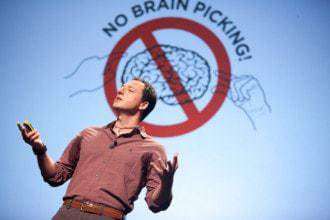
Dear EarthTalk: What is the latest thinking on the environmental causes (if any) of autism? I hear so much conflicting information I don’t know what to believe. — Bill Stribling, Austin, TX
In the 1980s, about one in 2,000 American kids was diagnosed with autism. Today the number is around one in 68, according to estimates from the U.S. Centers for Disease Control and Prevention’s Autism and Developmental Disabilities Monitoring Network. This disconcerting increase has led to intensified examination into what environmental factors may play a role in the disorder’s development. A wide range of exposures have been scientifically linked to autism, including air pollutants, phthalates and other endocrine disruptors, pesticides such as Chlorpyrifos, and many more. Vaccines were considered a leading culprit, but more recent research has proven this connection wrong — although the subject still engenders much debate.
A 2014 study by researchers at the Harvard School of Public Health found a strong link between autism and in utero exposure to air pollution: the risk of autism was doubled among children of women exposed to high levels of particulate air pollution during pregnancy. Another 2014 study out of the University of California, Davis determined that pregnant women living in close proximity to fields and farms where chemical pesticides are applied experience a 66 percent increased risk of having a child with autism or a developmental delay. The advocacy group Autism Speaks, which contributed to the funding of the Harvard study, believes that despite all the emerging data linking toxic exposures to autism, no environmental influence appears to cause or prevent autism by itself—rather they appear to influence risk in those genetically predisposed to the disorder.
“It’s important to remember that not all mothers exposed to air pollution during pregnancy will have a child with autism and not all children with autism were necessarily exposed to air pollution in utero,” said epidemiologist Michael Rosanoff, associate director for public health at Autism Speaks. “We know autism is a complex disorder and underlying genetic and biological factors interact to influence susceptibility. The next step is to identify the biological mechanisms that connect air pollution to autism and identify ways to treat if not prevent the harm to brain development.”
While many studies linking environmental toxins and autism have been inconclusive, one developing research approach appears to hold great promise. Remarkably, fallen baby teeth can be used to track a child’s prenatal and infant exposure to chemicals—thus allowing scientists to determine what environmental causes may have contributed to the disorder’s development.
“As a result, we can use teeth like an archeological record,” says Dr. Raymond Palmer of the University of Texas Health Science Center. “The enamel of different types of teeth begins to form at different points during prenatal development. In infancy, the enamel continues to absorb chemicals circulating through the baby’s body.” Palmer says the greatest insights from dental analysis may come from looking at chemical exposures along with gene abnormalities, which may affect one’s vulnerability to potentially toxic chemicals. “It’s not necessarily genes or environment,” he adds. “It’s likely to be both.”
Alysson Muotri at the University of California San Diego Department of Pediatrics is using teeth analysis to identify gene abnormalities in children with autism, even in cases with no previous known genetic cause. Parents of an 8-year-old autistic boy mailed Muotri’s team one of the boy’s baby teeth, and the researchers were able to detect a mutation in a gene known as TRPC6. The researchers treated the autistic boy with hyperforin, the active ingredient in St. John’s Wort. Dental analysis could potentially lead to personalized treatment for autism, whether the cause be identified as genetic, environmental or both.
CONTACTS: CDC Autism Spectrum Disorder Page, www.cdc.gov/ncbddd/autism/; Autism Speaks, www.autismspeaks.org; Muotri Lab at UCSD, www.pediatrics.ucsd.edu/research/muotri-lab; UT Health Science Center, www.uthscsa.edu.
EarthTalk® is produced by Doug Moss & Roddy Scheer and is a registered trademark of Earth Action Network Inc. View past columns at: www.earthtalk.org. Or e-mail us your question: earthtalk@emagazine.com.



